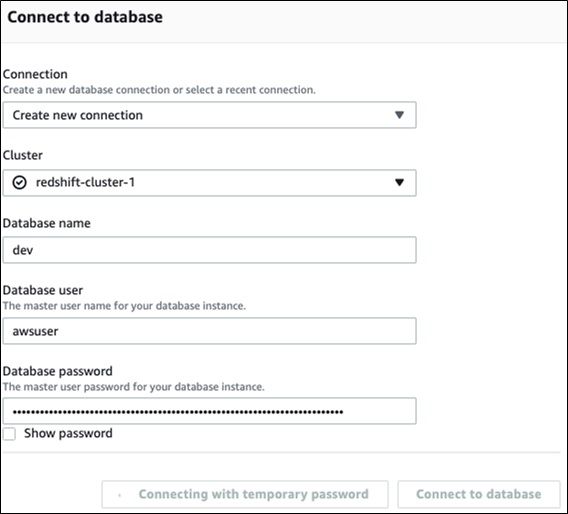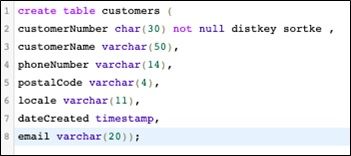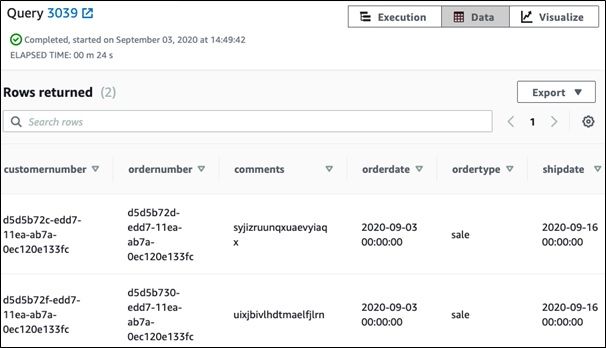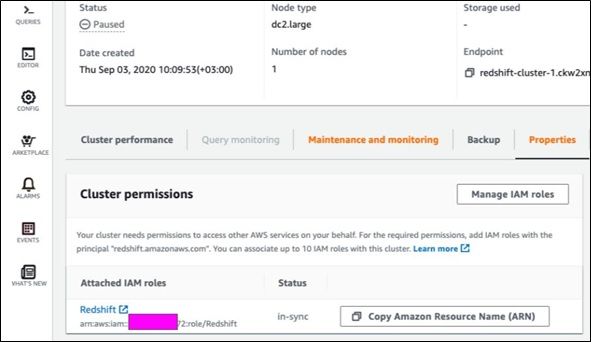There are several ways to load data into Amazon Redshift. In this tutorial, we’ll show you one method: how to copy JSON data from S3 to Amazon Redshift, where it will be converted to SQL format.
What is Amazon Redshift?
Amazon Redshift is a data warehouse that is known for its incredible speed. Redshift can handle large volumes of data as well as database migrations.
(Infamously, Amazon came up with the name Redshift in response to Oracle’s database dominance. Oracle is informally known as “Big Red”.)
Other methods for loading data to Redshift
Here are other methods for data loading into Redshift:
- Write a program and use a JDBC or ODBC driver.
- Paste SQL into Redshift.
- Write data to Redshift from Amazon Glue.
- Use EMR.
- Copy JSON, CSV, or other data from S3 to Redshift.
Now, onto the tutorial.
Getting started
We will upload two JSON files to S3. Download them from here:
Note the format of these files:
- JSON
- There is no comma between records.
- It is not a JSON array. Just JSON records one after another.
The orders JSON file looks like this. It only has two records. Notice that there is no comma between records.
{
"customernumber": "d5d5b72c-edd7-11ea-ab7a-0ec120e133fc",
"ordernumber": "d5d5b72d-edd7-11ea-ab7a-0ec120e133fc",
"comments": "syjizruunqxuaevyiaqx",
"orderdate": "2020-09-03",
"ordertype": "sale",
"shipdate": "2020-09-16",
"discount": 0.1965497953690316,
"quantity": 29,
"productnumber": "d5d5b72e-edd7-11ea-ab7a-0ec120e133fc"
} {
"customernumber": "d5d5b72f-edd7-11ea-ab7a-0ec120e133fc",
"ordernumber": "d5d5b730-edd7-11ea-ab7a-0ec120e133fc",
"comments": "uixjbivlhdtmaelfjlrn",
"orderdate": "2020-09-03",
"ordertype": "sale",
"shipdate": "2020-09-16",
"discount": 0.6820749537170963,
"quantity": 42,
"productnumber": "d5d5b731-edd7-11ea-ab7a-0ec120e133fc"
}
IAM role
You need to give a role to your Redshift cluster granting it permission to read S3. You don’t give it to an IAM user (that is, an Identity and Access Management user).
Attach it to a cluster—a Redshift cluster in a virtual machine where Amazon installs and starts Redshift for you.
Create the role in IAM and give it some name. I used Redshift. Give it the permission AmazonS3ReadOnlyAccess. and then paste the ARN into the cluster. It will look like this:
arn:aws:iam::xxxxxxxxx:role/Redshift
Create connection to a database
After you start a Redshift cluster and you want to open the editor to enter SQL commands, you login as the awsuser user. The default database is dev. Use the option connect with temporary password.

Create tables
Paste in these two SQL commands to create the customers and orders table in Redshift.
create table customers ( customerNumber char(40) not null distkey sortkey , customerName varchar(50), phoneNumber varchar(14), postalCode varchar(4), locale varchar(11), dateCreated timestamp, email varchar(20));

create table orders ( customerNumber char(40) not null distkey sortkey, orderNumber char(40) not null, comments varchar(200), orderDate timestamp, orderType varchar(20), shipDate timestamp, discount real, quantity integer, productNumber varchar(50));
Upload JSON data to S3
Create an S3 bucket if you don’t already have one. If you have installed the AWS client and run aws configure you can do that with aws s3 mkdir. Then copy the JSON files to S3 like this:
aws s3 cp customers.json s3:/(bucket name) aws s3 cp orders.json s3://(bucket name)
Copy S3 data into Redshift
Use these SQL commands to load the data into Redshift. Some items to note:
- Use the arn string copied from IAM with the credentials aws_iam_role.
- You don’t need to put the region unless your Glue instance is in a different Amazon region than your S3 buckets.
- JSON auto means that Redshift will determine the SQL column names from the JSON. Otherwise you would have to create a JSON-to-SQL mapping file.
copy customers from 's3://gluebmcwalkerrowe/customers.json' credentials 'aws_iam_role=arn:aws:iam::xxxxxxx:role/Redshift' region 'eu-west-3' json 'auto'; copy orders from 's3://gluebmcwalkerrowe/orders.json' credentials 'aws_iam_role=arn:aws:iam::xxxx:role/Redshift' region 'eu-west-3' json 'auto';
Now you can run this query:
select * from orders;
And it will produce this output.

Repeat for customer data as well.
Additional resources
For more on this topic, explore these resources:
- BMC Machine Learning & Big Data Blog
- AWS Guide, with 15+ articles and tutorials
- Amazon Braket Quantum Computing: How To Get Started







